FORGOTTEN CLASSIC: Ken Wilson was Newtown rugby league club’s all-time top points scorer. But it was one single point - the only one for the entire game - which stands out.
The first was a decade before, when his field goal gave the Jets a similarly unique 1-0 win over St George.
“It’s funny, I’m the leading point scorer in the history of Newtown and the two games I’m remembered for are the nil-all draw and the 1-0 win” says Wilson.
Wilson scored 1001 points for Newtown in his long career with the club, including 28 field goals, but it’s that one pointer against the Dragons that secured the 1973 Jets a place in rugby league history.
Newtown has been out of the top flight for 32 years, and as a result their long and proud history can often be overlooked. Perpetually short of cash, the Bluebags usually got by on grit, hard work and a can-do attitude. They won their last premiership in 1943 and were contenders through the rest of the decade and into the 1950s. But the 60s were a grimmer time for the club and they hit rock bottom in 1968 when they finished last with just two wins, failing even to surpass new boys Penrith and Cronulla.
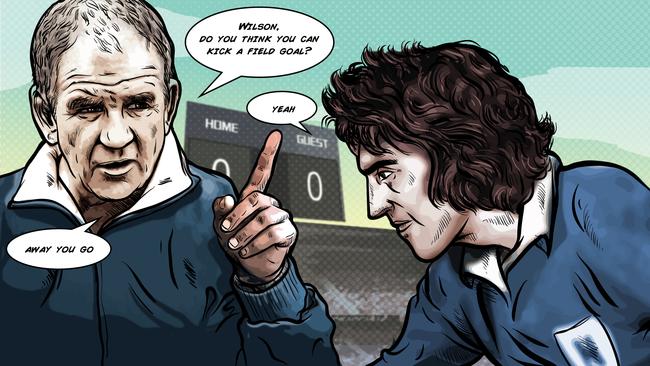
Former Balmain coach and then Australian mentor Harry Bath took the reins from 1969 to 1971 and brought some pieces together, but Newtown really came back into the light in 1973.
They were a grizzled old bunch, low on stars, but big on heart. Club legend Brian “Chicka” Moore was entering the twilight of his career, but the powerful centre was still effective.
Burly winger Lionel Williamson was the club’s sole international that season and captained the club, but the team was built on young bloods like Wilson, ball-playing lock Neil Pringle and diminutive fullback John Floyd.
Most significantly, they were coached by a big unit from Cronulla named Jack Gibson. This was before he was Jack Gibson: Supercoach , he was just the former firebrand front rower who helped turn around a couple of dire Roosters teams in the mid-1960s and helped steer an ageing St George side to the 1971 grand final.
The glorious second stint with the Roosters and the Parramatta dynasty were just specks on the horizon. But Gibson still had the aura, the swagger, the laconic attitude that lives on in a thousand anecdotes and stories.
“Jack made all his statements by saying nothing. He had a unique way of getting his message across. Some would say he coached on fear” remembers Pringle.
Floyd agrees, saying that “Everyone respected him; everyone did what he wanted us to do because he was the boss”.
“He just brought a level of professionalism that wasn’t really at Newtown before that, but he was a man of few words. Wayne Bennett’s a modern day Jack Gibson, the absolute mirror image of him.
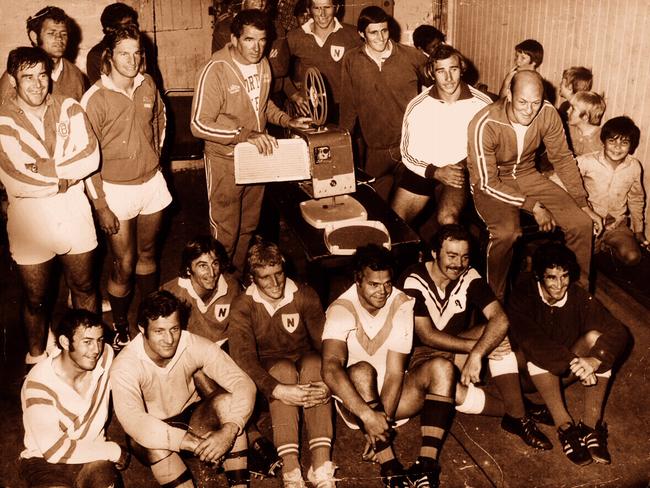
“When he speaks you’ve got to listen, which was the same with Jack” says Wilson.
“Jack was just simplistic, there were no shortcuts, no taking it easy, and it was 100 per cent effort.”
While the Roosters and Parramatta juggernauts were known for their incredible attacking abilities, the ’73 Jets didn’t have the luxury or the firepower to let the ball zing from sideline to sideline. They were built to defend, to tackle everything that moved and to do whatever it took to hold their line.
“There was no flamboyance in Jack Gibson as far as I was concerned and I was a flamboyant type of player and I liked to play flamboyantly” says Pringle.
“I was a cover defending lock, and I was coached previously at Newtown by Harry Bath, who was a great coach, and Jack was a coach who worked on the minimisation of mistakes and defence completely, whereas Harry Bath taught expansive, explosive, and how to exploit defensive lines.”
Eight weeks into the season, the nascent Jets were still finding their way and learning their style. Three wins and three losses was good enough for 5th on the ladder, and their bumper clash with the Dragons was afforded Match of the Day Status on the Saturday, meaning they were to play at the cavernous Sydney Cricket Ground rather than the humble confines of Henson Park or Kogarah Oval.
As they game began, it was clear from the beginning that it was destined to be a grim, defensive affair. Floyd remembers the game as “one of the hardest games I ever played in”, while Pringle says the Jets were “tackling their arses off”. The two sides were deadlocked at halftime, and the healthy 16,684 strong crowd let them feel their distaste, booing the two sides off at halftime.
When the match resumed, so did the struggle.
“Gibbo always based his teams around defence, so we weren’t about to give that away. We could also attack, but it was just one of those games, they defended just as well as we did” says Floyd, while Pringle began to grow frustrated with the team’s inability to get anything going.
“It was a pretty boring situation and the ball was greasy, it was the old leather ball, there was about a half a dozen chances put down by Newtown that should have resulted in tries that didn’t.”
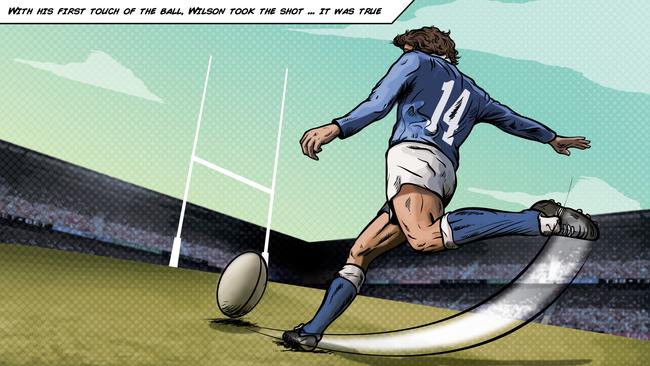
Nowadays it’s incredibly uncommon for a match to reach halftime and remain scoreless. In 1973 it was uncommon, albeit not unheard of. A 1-0 result only became possible with the reduction of field goals from two points to one in 1971, and before that there had been three 2-0 victories that shared the title of lowest scoring match ever.
The game dragged on and on, becoming somewhat surreal in its stalemate. Sitting on the bench, Wilson was itching to be injected into the action when Gibson turned to him.
“He just said, in his laconic way, ‘Wilson, do you think you can kick a field goal?’ and I said ‘yeah’ so he said ‘away you go’ and that was about it.”
“That was it, there was no grandiose plans because it wasn’t as sophisticated in those days. It was just ‘do your best’ and we did it.”
“Kenny Wilson and I went to kindergarten together and he was a natural, he could kick field goals when he was in kindergarten” says Pringle.
“Probably one of the greatest exponents in getting the ball to do what he wanted to do, he could move it either way. He was very, very clever, particularly with the leather ball and the weight of it; he could do all sorts of things”.

Wilson was nothing if not a field goal specialist. In 1970, back in the days of the two point drop goal, Wilson has kicked three field goals in a 6-0 reserve grade grand final triumph against Easts to secure Newtown’s first premiership in any grade since 1951.
At the SCG this particular winter’s afternoon, with his first touch of the ball and with a little over 10 minutes remaining, Wilson took the shot. It was true, and the Jets took a most unusual lead.
“It was a nice sunny day, it wasn’t a wet ball and it wasn’t 50 yards out, it was about 30 yards out, not far from the centre”
Ten minutes can be a lifetime in rugby league, and the Dragons still had plenty of spark left. With time drawing to a close, St George skipper Billy Smith created something down the blindside and sent winger John Chapman away towards the Paddington End. All that stood between Chapman and the winning try was Floyd, a 66 kilogram scrapper who joined the club from Souths the previous year.
“Chapman went down the touchline and I came across from about midfield and affected a tackle on him, and if he hadn’t have stopped I would have kept going (over the sideline), he only had to stop and he would have got me, but he thought he could get there.”
Every inch of Floyd flew into Chapman, saving a certain try and preserving the narrowest of leads.
“Johnny Floyd was a great defender, a great defender, fortunately he got his big nose in the road a few times” recalls Pringle.
Wilson says that such a tackle was “Bubsy’s signature play, he was a great cover defender. Not a skinny player, but a lean player, Johnny. He was well known for that type of tackle”.
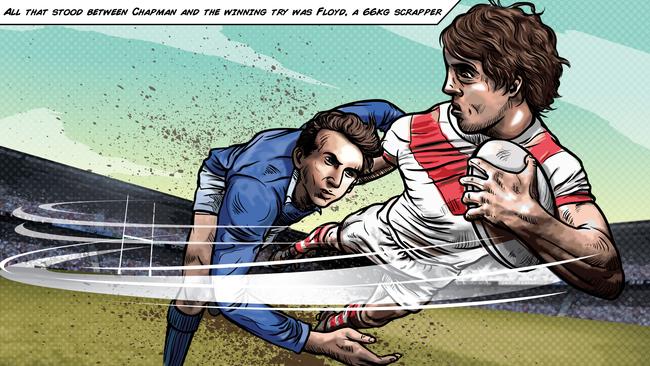
By the time the clock expired, what seemed impossible had come to pass. The narrowest margin possible in rugby league, 1-0, had become a reality and the Jets had won the day. There was no sense of history in the Newtown sheds, just plain delight at getting a win.
“(The atmosphere was) euphoric, of course. We won! It doesn’t matter how or when or where if you won. You don’t have to win by 20-0” says Pringle, who won man of the match that day.
“It was Mother’s Day and I got the man of the match award, which was the Frank Hyde Seiko watch.
That particular day the Frank Hyde Seiko watch wasn’t given. Because it was mother’s day I was given a set of heated hair rollers. As you know, I’m bald.”
The press had a field day with the result, claiming that Gibson and the Jets were killing rugby league with their defensive football. Not that the victors cared. Wins were wins round Newtown way, and the result was part of a season to remember for the club. For the first time in their history they won the club championship and qualified for the finals in 4th spot.
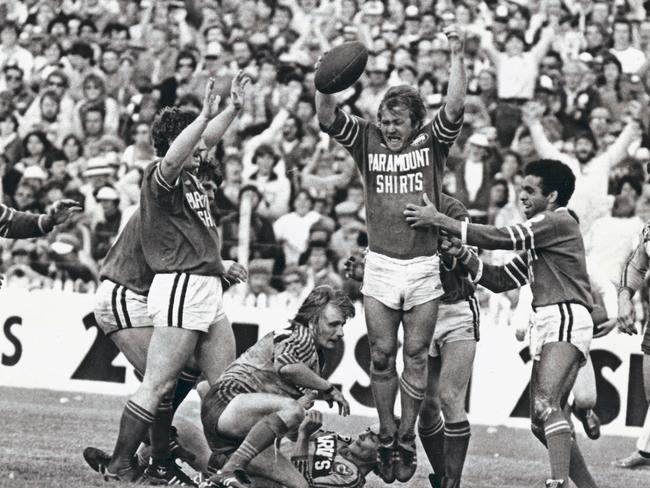
After dusting the Bulldogs 13-2, they took on the Dragons at the SCG yet again but this time there was no game winner. A tense 8-all draw precipitated a midweek replay, where Pringle managed to score in an 8-5 boilover. The momentum ran out the next week, with the Jets losing 20-11 to grand final bound Cronulla.
That season was one of the last great runs in Newtown’s proud history. The 13-import rule crippled the club’s ability to retain players, Gibson left at seasons end to become a legend elsewhere and the club only managed one more finals appearance – a fairy-tale run to the 1981 grand final – before they vanished from first grade at the end of 1983.
Neil Pringle left the Jets at the end of 1974 for Balmain, where he remained a fan favourite before leaving to captain-coach Cessnock at the end of 1982.
That 1973 season was the finest of John Floyd’s career, but he was still an underrated performer for Newtown throughout the decade and was club captain for a time before finishing his career with a one year stint at South Sydney in 1979.
Ken Wilson stayed until the end, albeit with brief stints with Port Kembla and Penrith. He captained the Jets in their last ever match and retired as the club’s highest point scorer.
Newton 1 d St George 0.
St George: 1: Ted Goodwin, 2: Ken MacFarlane, 3: Gary Pethybridge, 4: Bob Clapham, 5: John Chapman, 6: Tony Branson, 7: Billy Smith (capt), 8: Lindsay Drake, 9: Graeme Sims, 10 Peter Fitzgerald, 11: Barry Beath, 12: Russell Cox, 13: Brian Norton
Newtown: 1: John Floyd, 2: Lionel Williamson (capt), 3: Brian Moore, 4: David Oliveri, 5: Ron Fogarty, 6: Kevin Fidock, 7: John Bonham, 8: Neil Pringle, 9: Gary Sullivan, 10: Paul Dawson, 11: Mick Souter, 12: Mark Robertson, 13: Denis Gardiner

Add your comment to this story
To join the conversation, please log in. Don't have an account? Register
Join the conversation, you are commenting as Logout
Here’s what you can expect with tomorrow’s Parramatta weather
As we move into summer what can locals expect tomorrow? We have the latest word from the Weather Bureau.
Here’s what you can expect with tomorrow’s Parramatta weather
As we move into summer what can locals expect tomorrow? We have the latest word from the Weather Bureau.